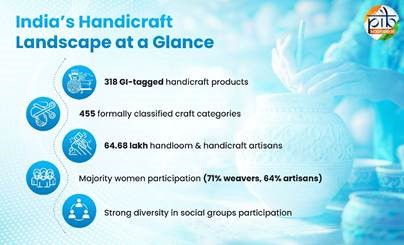Description

Disclaimer: Copyright infringement not intended.
Context
- The Indian government has launched a new platform called CDP-SURAKSHA to disburse subsidies to horticulture farmers under the Cluster Development Programme (CDP).
- This initiative is part of the government's efforts to promote horticulture crops across the country.
What is the CDP-SURAKSHA?
- The CDP-SURAKSHA is essentially a digital platform. SURAKSHA stands for “System for Unified Resource Allocation, Knowledge, and Secure Horticulture Assistance.”
- The platform will allow an instant disbursal of subsidies to farmers in their bank account by utilising the e-RUPI voucher (more on this later)from the National Payments Corporation of India (NPCI).
- The CDP-SURAKSHA has features such as database integration with PM-KISAN, cloud-based server space from NIC, UIDAI validation, eRUPI integration, local government directory (LGD), content management system, geotagging, and geo-fencing.
How does the CDP-SURAKSHA work?
- The platform allows access to farmers, vendors, implementing agencies (IA), and cluster development agencies (CDAs), and officials of the National Horticulture Board (NHB).
- A farmer can login using their mobile number and place an order for planting material such as seeds, seedlings, and plants based on their requirement.
- Once the demand has been raised by the farmer, the system will ask them to contribute their share of the cost of planting material. The subsidy amount paid by the government will appear on the screen automatically.
- After the farmer pays their contribution, an e-RUPI voucher will be generated. This voucher will then be received by a vendor, who will provide the required planting material to the farmer.
- Once the ordered planting material is delivered to the farmer, they have to verify the delivery through geo-tagged photos and videos of their field. It is only after the verification that the IA will release the money to the vendor for the e-RUPI voucher.
- The vendor will be required to upload an invoice of the payment on the portal.
The IA will collect all the documents and share them with the CDA for subsidy release, then only the subsidy will be released to the IA.
- However, the farmer, who raised the demand for the plant material using the platform, can avail of the subsidy at the first stage only.
What is e-RUPI?
- The CDP-SURAKSHA platform uses e-RUPI vouchers from the NPCI. The voucher is a one-time payment mechanism that can be redeemed without a card, digital payments app or internet banking access, at the merchants accepting e-RUPI.
- According to the NPCI, the e-RUPI can be shared with the beneficiaries for a specific purpose or activity by organisations or government via SMS or QR code.
How is the new system different from the old one?
- In the old system, a farmer had to buy planting materials on their own. They would then have to approach the officials concerned for the release of the subsidy.
- The CDP-SURAKSHA platform, however, will provide subsidies to farmers upfront, at the time of purchasing the planting material.
- Vendors, who will supply planting materials to farmers, will receive their payment only after farmers verify the delivery of their orders.
How many farmers and banks have come on board?
- While the platform is yet to be unveiled at the national level, around 8,400 farmers’ details have been uploaded on the CDP-SURAKSHA platform so far. These included 8,000 farmers of Sahyadri Farms Private Ltd, which is implementing the grape cluster in Nasik, Maharashtra. The rest of the 400 farmers are from Meghalaya Basin Management Agency (MBMA), which is implementing the turmeric cluster in Meghalaya.
- Besides this, four banks — HDFC Bank, ICICI Bank, State Bank of India (SBI) and Bank of Baroda — have been onboarded on the platform. These banks will generate e-RUPI vouchers for fund disbursement.
What is the Cluster Development Program (CDP)?
- The CDP is a component of the central sector scheme of NHB. It is aimed at leveraging “the geographical specialisation of horticulture clusters and promoting integrated and market-led development of pre-production, production, post-harvest, logistics, branding, and marketing activities.”
- So far, 55 horticulture clusters have been identified, out of which 12 have been selected for the pilot. These clusters are in different stages of development. Four more clusters — a floriculture cluster in West Bengal, coconut clusters in Kerala and Tamil Nadu, and white onion clusters in Gujarat — are also in the pipeline. Each cluster will have an implementing agency and a cluster development agency (CDA).
- According to the government, about 9 lakh hectares of area will be covered through all 55 clusters, covering 10 lakh farmers.
- It is estimated that the initiative will attract private investment of Rs 8,250 crore, in addition to the government’s assistance, which is fixed according to the size of the cluster — up to Rs 25 crore for mini cluster (size up to 5,000 ha), up to Rs 50 crore for medium clusters (5,000 to 15,000), and up to Rs 100 crore for mega clusters (more than 15,000 ha).
|
PRACTICE QUESTION
Q. Discuss the significance of promoting horticulture crops across India and analyze the measures taken by the government to achieve this objective.
|












